#Pine Ridge Agency
Photo

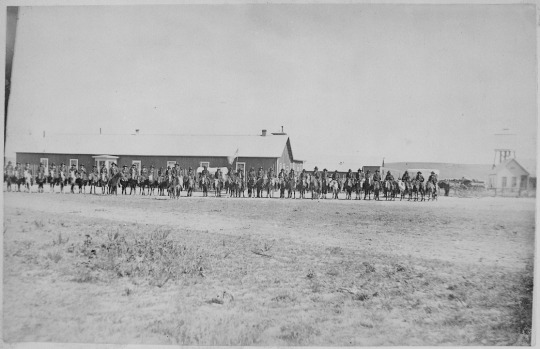
Sioux Indian police lined up on horseback in front of Pine Ridge Agency buildings, Dakota Territory, 8/9/1882
Series: Photographs of Indians, Indian Agencies, and Schools, 1876 - 1896
Record Group 75: Records of the Bureau of Indian Affairs, 1793 - 1999
Image description: Zoomed-in detail of the whole photo. A line of 15 men on horseback next to each other, with one man on horse out in front. The men are wearing matching jackets and wide-brimmed hats. Behind the line of men is a covered wagon and an American flag, blurry in the wind, and a long building.
Image description: A line of 40 men on horseback next to each other, very small in the center of the photo. Behind them is a long building.
#archivesgov#August 9#1882#1800s#Sioux#Oglala Lakota#South Dakota#Indian Police#Native American history#American Indian history#Indigenous American history#Pine Ridge Agency
53 notes
·
View notes
Text
On Dec 10th, we venerate Elevated Ancestor & Saint Maȟpíya Lúta aka Chief Red Cloud on the 113th anniversary of his passing 🕊 [for our Hoodoos of First Nations descent]

Red Cloud, Chief of the Oglala Sioux, was a political leader, a negotiator of peace, & fierce warrior who fought tirelessly to save his people from colonizer expansion into the midwest.
Maȟpíya Lúta was born near the forks of the Platte River, in what was at the time known as the Nebraska Territory; to his Ogala Lakota mother & Brulé Lakota leader father.
He showed great courage, strength, & leadership in battles against the Oglala's traditional competitors once he came of age; the Pawnees, Crows, Shoshones, & Utes. This ultimately earned him Chiefdom. He also successfully killed the usurper rival to his uncle's political leadership. This divided the Oglala for years to come.
Once European invaders discovered gold in Montana in the 1860s, they began dessimating habitats, sacred lands, & territories to build a road from Fort Laramie in present-day Wyoming to the gold fields. They constructed a series of forts to protect the road from interference, which became known as the Bozeman Trail. In 1865, Chief Red Cloud led the Ogala & their Cheyenne allies into a 2-year war against the colonizers along the Bozeman Trail. They were successful. The soldiers, miners, & others were forced to abandon their operation.
Being the peaceful negotiator that he was, at the end of the war, Chief Red Cloud signed the Second Treaty of Fort Laramie, which bound the U.S. to the promise that it would abandon the Bozeman Trail & return - what is now the western half of South Dakota, along with large parts of Wyoming, & Montana - to Lakota Sioux possession. In return, Red Cloud agreed to end his assault & relocate to a reservation in Nebraska known as the Red Cloud Agency.
In his older age, the great warrior became a diplomat of peace. In 1870s, Chief Red Cloud, along with several other First Nations leaders, traveled to D.C. to meet with U.S. President Grant. He later met with Grant again in 1875, when Grant has the caucasity to offer $25K to the Lakota if they would give up their rights to hunt along the Platte River in the Dakota Territory. Red Cloud, and other leaders, vehemently refused.
While Red Cloud pursued the path of peaceful negotiation & passive tactics, many other Indian leaders (including his own son) wanted to fight for their territory & ways of life. Red Cloud & President Grant sought to avoid war, but it was inevitable. After Sitting Bull's crushing defeat of a U.S. 7th Calvary in June of 1876, Whites began perpetuating aggressively negative campaigns & propaganda against First Nations in the West. Even still, Red Cloud resisted the call to war. He pursued diplomacy. In 1878, he successfully lobbied for the removal of the Indian agent at Pine Ridge Agency due to poor treatment. He returned to D.C. several more times to lobby for his people & defend the rights of all First Nations. This led him to become the most photographed Native of the 19th Century.
Red Cloud continued his work to preserve native lands & to maintain the authority of traditional First Nations leader until he was removed from political power; this may have been influenced by his shifting views in favor colonialism via Christianity & adopted the first name, "John". He later died on the Pine Ridge Agency with his wife; blind & ailing. There he rests in the cemetery so named after him.
"The Whites are the same everywhere. I see them every day. They made us many promises, more than I can remember, but they never kept but one; they promised to take our land, and they took it. " - Chief Red Cloud.
We pour libations & give him💐 today as we celebrate him for his spirit of resistance & immense peace. May we look to him for wise counsel, peaceful resolutions, & as a lesson in the influential power of colonialism.
Offering suggestions: River water, peace pipe, Lakota music, bison meat served with wild potatoes & prairie turnips
‼️Note: offering suggestions are just that & strictly for veneration purposes only. Never attempt to conjure up any spirit or entity without proper divination/Mediumship counsel.‼️
#hoodoo#hoodoos#atr#the hoodoo calendar#ancestor veneration#Elevated Ancestors#Chief Red Cloud#Red cloud#Lakota#First Nations#Plains Indians#Oglala#Oglala Lakota#Lakota Nation
22 notes
·
View notes
Text
Atrocities US committed against NATIVE AMERICANS
In 2016, the US army corp of engineers approved a Energy Transfer Partners’ proposal to build an oil pipeline near the Standing Rock Indian Reservation, sparking the Dakota Access Pipeline Protests, evoking a brutal response from North Dakota police aided by the National Guard, private security firms, and other law enforcement agencies from surrounding states. The Standing Rock Sioux tribe believes that the pipeline would put the Missouri River, the water source for the reservation, at risk, pointing out two recent spills, a 2010 pipeline spill into the Kalamazoo River in Michigan, which cost over billion to clean up with significant contamination remaining, and a 2015 Bakken crude oil spill into the Yellowstone River in Montana. Police repression has included dogs attacking protesters, spraying water cannons on protesters in sub-freezing temperatures, >700 arrests of Native Americans and ~200 injuries, a highly militarized police force using armored personnel carriers, concussion grenades, mace, Tasers, batons, rubber bullets, and tear gas. In November 2017, the keystone XL pipeline burst, spilling 210,000 gallons of oil in Amherst, South Dakota.
In 1975, FBI agents attacked AIM activists on the Pine Ridge Reservation, in the ‘Pine Ridge Shootout’. Two FBI agents, and an AIM activist were killed. In two separate trials, the U.S. prosecuted participants in the firefight for the deaths of the agents. AIM members Robert Robideau and Dino Butler were acquitted after asserting that they had acted in self–defense. Leonard Peltier was extradited from Canada and tried separately because of the delay. He was convicted on two counts of first–degree murder for the deaths of the FBI agents and sentenced to two consecutive terms of life in prison, after a trial which is still contentious. He remains in prison.
In 1973, 200 Oglala Lakota and AIM activists occupied the town of Wounded Knee, South Dakota, on the Pine Ridge Reservation, called the Wounded knee incident. They were protesting the reservation’s corrupt US-backed tribal chairman, Dick Wilson, who controlled a private militia, called Guardians of the Oglala Nation (GOONs), funded by the government. FBI, US marshals, and other law enforcement cordoned off the area and attacked the activists with armored vehicles, automatic rifles, machine guns, grenade launchers, and gas shells, resulting in two killed and 13 wounded. Ray Robinson, a civil rights activist who joined the protesters, disappeared during the events and is believed to have been murdered. As food supplies became short, three planes dropped 1,200 pounds of food, but as people scrambled to gather it up, a government helicopter appeared overhead and fired down on them while groundfire came from all sides. After the siege ended in a truce, 120 occupiers were arrested. Wilson stayed in office and in 1974 was re-elected amid charges of intimidation, voter fraud, and other abuses. The rate of violence climbed on the reservation as conflict opened between political factions in the following three years; residents accused Wilson’s private militia of much of it.
In Nov. 1969, a group of 89 Native Americans occupied Alcatraz Island for 15 months, to gauge the US’s commitment to the Treaty of Fort Laramie (1868), which stated that all abandoned federal land must be returned to native people. Eventually the government cut off all electrical power and all telephone service to the island. In June, a fire of disputed origin destroyed numerous buildings on the island. Left without power, fresh water, and in the face of diminishing public support and sympathy, the number of occupiers began to dwindle. On June 11, 1971, a large force of government officers removed the remaining 15 people from the island.
From its creation in 1968, The American Indian Movement (AIM) has been a target of repression from law enforcement agencies, and surveillance as one of the FBI’s COINTELPRO targets. This includes the wounded knee incident and the pine ridge shootout.
In 1942 the federal government took privately held Pine Ridge Indian Reservation land owned by tribal members in order to establish the Badlands Bombing Range of 341,725 acres, evicting 125 families. Among the families evicted was that of Pat Cuny, an Oglala Sioux. He fought in World War II in the Battle of the Bulge after surviving torpedoing of his transport in the English Channel. Dewey Beard, a Miniconjou Sioux survivor of the Wounded Knee Massacre, who supported himself by raising horses on his 908-acre allotment received in 1907 was also evicted. The small federal payments were insufficient to enable such persons to buy new properties. In 1955 the 97-year-old Beard testified of earlier mistreatment at Congressional hearings about this project. He said, for “fifty years I have been kicked around. Today there is a hard winter coming. …I might starve to death.”
In 1890, US soldiers killed 150-300 people (including 65 women and 24 children) at Wounded Knee (19-26 people, including two women and eleven children.) on the Lakota Pine Ridge Indian Reservation in the U.S. state of South Dakota. Twenty-five soldiers also died, and 39 were wounded (6 of the wounded later died). At least twenty soldiers were awarded the Medal of Honor. The event was driven by local racism towards the practice of Ghost Dancing, which whites found distasteful, and the Native Americans arming up in response to repeated broken treaties, stolen land, and their bison-herds being hunted to near extinction by the whites.
In 1887, the Dawes Act, and Curtis Act, resulted in the loss of 90 million acres of native-alloted land, and the abolition of many native governments. During the ensuing decades, the Five Civilized Tribes lost 90 million acres of former communal lands, which were sold to non-Natives. In addition, many individuals, unfamiliar with land ownership, became the target of speculators and criminals, were stuck with allotments that were too small for profitable farming, and lost their household lands. Tribe members also suffered from the breakdown of the social structure of the tribes.
Starting in the 1870s, The US army, aided by settlers and private hunters, began a widespread policy of slaughtering bufallo and bison, in order to destroy many tribe’s primary food source, and to starve Native Americans into submission. By 1900, they succeeded; the bufallo population dropped from more than 30 million, to a few hundred. The country’s highest generals, politicians, and presidents including Ulysses S. Grant, saw the destruction of buffalo as solution to the country’s “Indian Problem.” By destroying the food supply of the plains natives, they could more easily move them onto reservations.
Starting in 1830-50, The Trail of Tears was a series of forced removals of Native American nations, including Chickasaw, Choctaw, Creek, Seminole, Cherokee people and the African freedmen and slaves who lived among them, from their ancestral homelands in the Southeastern United States to an area west of the Mississippi River that had been designated as Native Territory. The forced relocations were carried out by various government authorities following the passage of the Indian Removal Act in 1830. “Marshaled by guards, hustled by agents, harried by contractors,they were being herded on the way to an unknown and unwelcome destination like a flock of sick sheep.” They went on ox wagons, on horses, on foot, then to be ferried across the MississippiRiver. The army was supposed to organize their trek, but it turned over its job to private contractors who charged the government as much as possible, gave the Indians as little as possible. The Cherokee removal in 1838 (the last forced removal east of the Mississippi) was brought on by the discovery of gold near Dahlonega, Georgia in 1828, resulting in the Georgia Gold Rush. Approximately 2,000-6,000 of the 16,543 relocated Cherokee perished along the way.
In 1848, the California Genocide is a term used to describe the drastic decrease in Native American population in California. The population decreased from ~300,000 in 1769, to 16,000 in 1900.
The Second Seminole War, also known as the Florida War, was a conflict from 1835 to 1842 in Florida between various groups of Native Americans collectively known as Seminoles and the United States, part of a series of conflicts called the Seminole Wars. The Second Seminole War, often referred to as the Seminole War, is regarded as “the longest and most costly of the Indian conflicts of the United States.” ~3000 seminoles were killed, and 4000 were deported to Indian territory elsewhere.
In 1832, the Black Hawk War, was a brief 1832 conflict between the United States and Native Americans led by Black Hawk, a Sauk leader, in Illinois. The war gave impetus to the US policy of Indian removal, in which Native American tribes were pressured to sell their lands and move west of the Mississippi River and stay there. Over 500 Native Americans were killed in the conflict.
In 1832, the Chickasaw Indians were forced by the US to sell their country in 1832 and move to Indian Territory (Oklahoma) during the era of Indian Removal in the 1830s.
In 1813, the Creek War, was a war between the US, lead by the then notorious indian-hunter Andrew Jackson, and the Creek nation, residing primarily in Alabama. Over 1,500 creeks were killed. The war effectively ended with the Treaty of Fort Jackson, where General Andrew Jackson insisted that the Creek confederacy cede more than 21 million acres of land from southern Georgia and central Alabama. These lands were taken from allied Creek as well as Red Sticks. In 1814, Andrew Jackson became famous for his role in the Battle of Horseshoe Bend, where his side killed more than 800 Creeks. Under Jackson, and the man he chose to succeed him, Martin Van Buren, 70,000 Indians east of the Mississippi were forced westward.
The Red Sticks, a faction of Muscogee Creek people in the American Southeast, led a resistance movement against European-American encroachment and assimilation; tensions culminated in the outbreak of the Creek War in 1813.
From 1785-96, the Northwest Indian War was a war between the US and a confederation of numerous Native American tribes, with support from the British, for control of the Northwest Territory. President George Washington directed the United States Army to enforce U.S. sovereignty over the territory. Over 1,000 Native Americans were killed in the bloody conflict.
In the 1800s, Indian removal was a policy of the United States government whereby Native Americans were forcibly removed from their ancestral homelands in the eastern United States to lands west of the Mississippi River, thereafter known as Indian Territory. That policy has been characterized by some scholars as part of a long-term genocide of Native Americans.
The Texan-Indian Wars were a series of 19th-century conflicts between settlers in Texas and the Southern Plains Indians. Its hard to approximate the number of deaths from the conflicts, but the Indian population in Texas decreased from 20,000 to 8,000 by 1875.
The Indian Wars is a name given to the collection of over 40 conflicts and wars between Native Americans and US settlers. The US census bureau reports that they have cost the lives of about 19,000 white men, women and children, including those killed in individual combats, and the lives of about 30,000 Indians. The actual number of killed and wounded Indians must be very much higher than the number given… Fifty percent additional would be a safe estimate.
From 1500-1900s, European and later US colonists and authorities displaced and committed genocide on the Native American Population. Ward Churchill characterizes the reduction of the North American Indian population from an estimated 12 million in 1500 to barely 237,000 in 1900 as a “vast genocide.. the most sustained on record.
#anti capitalism#socialism#leftism#anarchy#communism#late stage capitalism#classism#economics#inequality#capitalism#current events#us healthcare#us house of representatives#us history#us hegemony#anti imperialism#imperialism#anti capitalist love notes#tweet#anti capitalists be like#anti capatilism#native american#killers of the flower moon
29 notes
·
View notes
Text

Native American Outdoors Family Women Papoose
Sioux ... C -1870
Spotted Tail’s wife and family, Native American (Sioux) woman, boys, girls, and baby pose outdoors, at Pine Ridge Agency, South Dakota - Cross - 1870
13 notes
·
View notes
Text
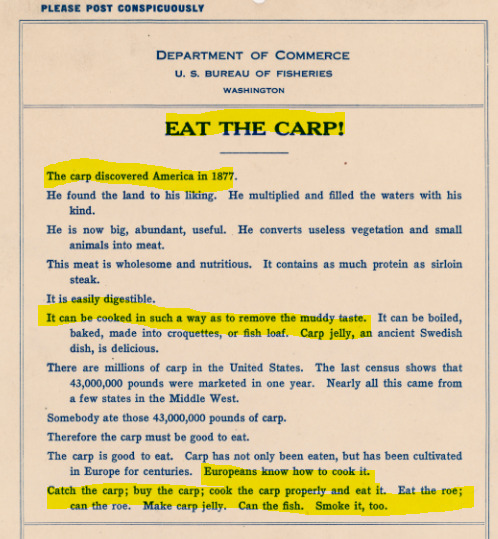
EAT THE CARP poster, 1911. Records of the US Fish and Wildlife Service, NARA ID 5710027. Featured in the National Archives exhibit “What’s Cooking Uncle Sam.”
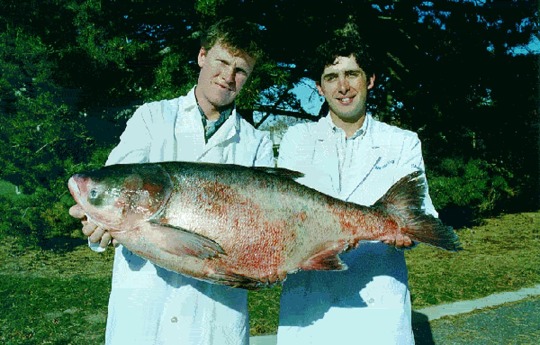
Two students hold a bighead carp. Illinois Waterway; Mississippi River; Great Lakes. undated. Records of the US Fish and Wildlife Service, NARA ID 166698952.
EAT THE CARP!
Good for gefilte fish... and more!
By Miriam Kleiman, Public Affairs
The US Fish and Wildlife Service's creative and innovative outreach dates back more than a century, as shown in this 1911 "EAT THE CARP!" poster imploring Americans to embrace, fish, and eat the heavily proliferating carp. The poster is a brilliant appeal to turn of the century foodies! (NARA holds millions of records from the U.S. Fish and Wildlife Service, Record Group 22, dating back to 1868!)
"Catch the carp; buy the carp, cook the carp properly and eat it. Eat the roe; can the roe. Make carp jelly. Can the fish. Smoke it too."
Need more encouragement? Carp: something for everyone!
For keto fans: "This meat is wholesome and nutritious. It contains as much protein as sirloin steak."
Got GI issues? "It is easily digestible."
For followers - join the pack! "Somebody ate the 43,000,000 pounds of carp. Therefore the carp must be good to eat."

EAT ME! Original caption: "This fish is in trouble. A Big Muddy National Wildlife Refuge (MO) employee holds an Asian carp, (Invasive species), for the camera." Records of the US Fish and Wildlife Service, NARA ID 166692514.
More CARP records!
"It's summertime and the living is easy. Fish are jumping..." (George Gershwin, Porgy and Bess )

These Big Muddy National Wildlife Refuge (MO) employees electrofish for the Asian carp, undated, Records of the US Fish and Wildlife Service, NARA ID 166692518.
"Tree Catches Fish"
"This Asian carp, (Invasive species), jumps up to the trees to escape the long arm of the biologists."

Big Muddy National Wildlife Refuge (MO), undated. Records of the US Fish and Wildlife Service, NARA ID 166692522.
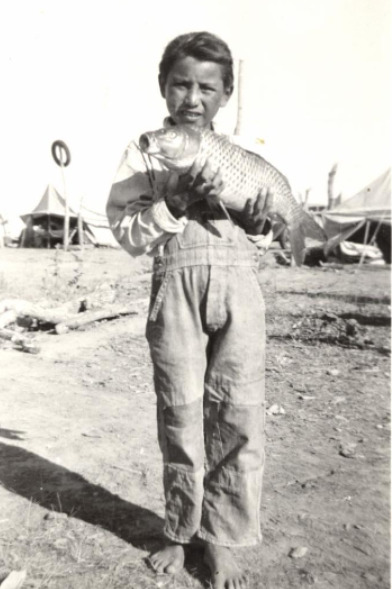
Boy and Carp, Department of the Interior. Bureau of Indian Affairs. Pine Ridge Agency, undated. NARA ID 12459787.
Don't forget the gefilte fish!

Dancing gefilte fish gif online here.
More online!
“A Carpapalooza: An American Anthem”, Pieces of History
Learn about the dangers of illegal muskrat trapping!
Fur Warden Sketches Map of Fortymile River Basin in Alaska, The Text Message.
National Park Service Virtual Tour, National Archives Catalog newsletter.
#usfws#nature#environment#fishing#i love fish#angler#carp#wildlifephotography#lures#fishing life#usinterior#wildlife refuge#fishingtrip#gefilte fish#native american#indigineous people#us fish and wildlife service
77 notes
·
View notes
Photo
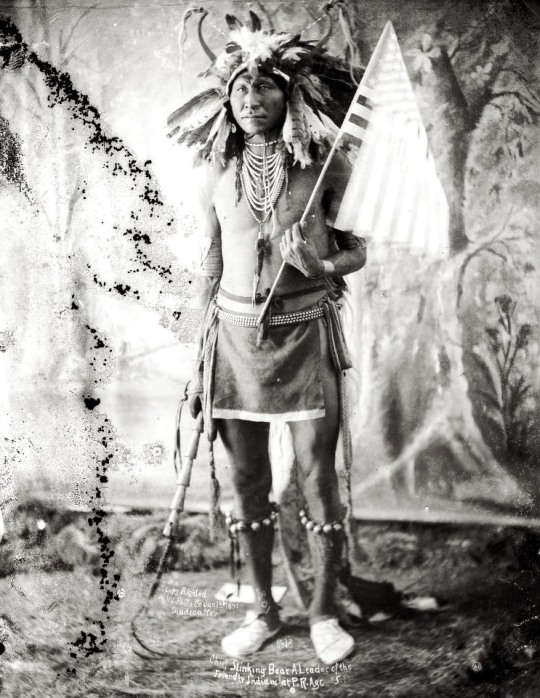
Chief Stinking Bear. Sioux. Pine Ridge Agency, South Dakota ca. 1890-1891
34 notes
·
View notes
Text
The Shimla Holiday Package is offered by Map My Destination, a renowned travel agency dedicated to curating unforgettable experiences. Nestled in the majestic Himalayas, Shimla, the capital city of Himachal Pradesh, beckons with its pristine beauty and colonial charm. This exclusive holiday package promises a seamless blend of adventure, relaxation, and cultural exploration. Immerse yourself in the breathtaking landscapes as you traverse pine-clad hills, visit historic landmarks like the Viceregal Lodge, and stroll along the iconic Ridge.
0 notes
Text
News from Belize, 21 July
The Santa Rita Cemetery in Cayo District is at full capacity, with only reserved or pre-paid plots available for burials.
The municipality is seeking to purchase a 10-acre piece of land for a second cemetery, but they need to raise $50,000 as a down payment.
2. Despite reaching out to the government for assistance, the municipality has not received any support thus far.
A fire in Dangriga has left a man homeless after his home was completely destroyed.
The cause of the fire is unknown and under investigation.
Andre Garcia, the victim, is in need of assistance and can be reached at 602-4856.
3. The Fire Department has initiated a probe into the explosion that occurred in Neuland Community, Corozal District on Tuesday night, resulting in the tragic loss of an infant and a toddler.
4. There was a fire in the Shipyard Community, Orange Walk District on Monday. The Belize National Fire Service initiated an investigation into the matter and discovered that it was caused by a malfunction in the equipment used on a tanker truck transporting crude oil.
5. The Caribbean Community (CARICOM) is intensifying its efforts to combat cyber-criminals in the region by collaborating with member states. Today, the Ministry of Home Affairs, in conjunction with CARICOM's Implementation Agency for Crime and Security (IMPACS), organized a meeting for the "Cyber-in-country Sensitization and Training 2023" project, funded by the European Union. The project aims to enhance capacity building in cybercrime prevention, detection, investigation, and prosecution. The training will assist law enforcement agencies, the banking sector, and the judicial sector in addressing financial crime, cybercrime, and asset recovery.
6. Belize Agricultural Health Authority is remaining vigilant amid a New World Screwworm outbreak in Central America.
youtube
Of note is that there has only been one case of the New World Screwworm outbreak in Costa Rica, where a dog was illegally imported from Panama.
7. In response to an increase in human activity in the Cooma Cairn area of the Mountain Pine Ridge Forest Reserve in the western Cayo District, Friends for Conservation and Development (FCD) inaugurated a new ranger outpost on Monday.
Over the past 14 months, FCD has dispatched rangers to support the Forest Department in monitoring activities, including forest fire incidents and bark beetle infestations. They are also monitoring the condition of the Upper Macal Watershed through public participation and research, as well as human activity in the reserve, which is the gateway to the Chiquibul National Park and has experienced increased human presence due to the upgrade of the Caracol Road in the area.
Thanks to the endorsement from the Forest Department, which allows FCD to use the building, and the financing from Bull Run Overseas Limited for the refurbishment costs, the refurbished Ranger Outpost is now operational. This building was previously occupied by the British Army Training and Support Unit Belize (BATSUB) and will now serve as the central hub for FCD's monitoring program in the Mountain Pine Ridge Forest Reserve.
#SantaRitaCemetery#CayoDistrict#FullCapacity#Burials#DangrigaFire#HomelessMan#VictimInNeed#NeulandCommunity#CorozalDistrict#ExplosionProbe#InfantAndToddlerLoss#ShipyardCommunity#OrangeWalkDistrict#FireInvestigation#EquipmentMalfunction#CrudeOilTransport#CARICOM#CybercrimeFight#RegionalCollaboration#CyberTraining#FinancialCrime#AssetRecovery#NewWorldScrewworm#CentralAmericaOutbreak#ImportationWarning#CoomaCairn#MountainPineRidge#RangerOutpost#ForestMonitoring#ChiquibulNationalPark
0 notes
Text
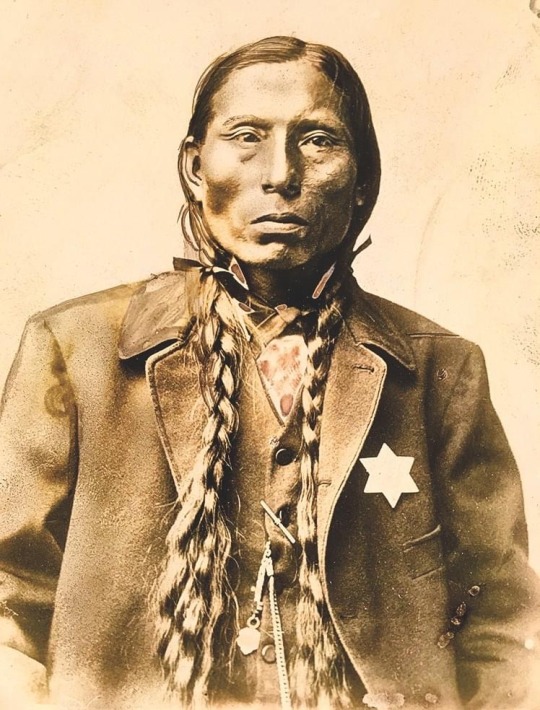
A former warrior under Crazy Horse and a nephew of Red Cloud, Hunts the Enemy (George Sword) traveled to Crazy Horse’s camp in the spring of 1877 and helped persuade the chief to go to the Red Cloud Agency and surrender with his people. Hunts the Enemy is pictured here as a Metal Breast (Indian policeman) at the Pine Ridge Agency.
Read More: https://truewestmagazine.com/article/crazy-horses-final-vision/
0 notes
Text

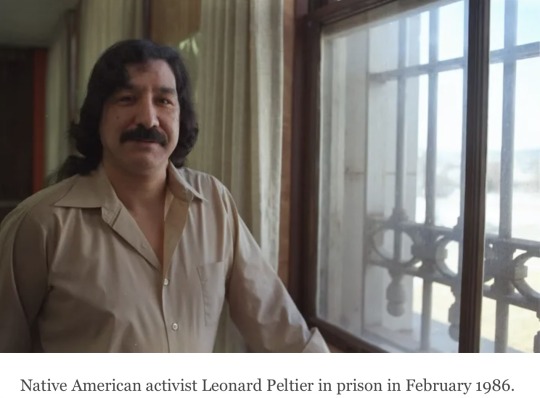
Leonard Peltier has been in prison for 44 years for a crime he says he didn’t commit.
His trial was riddled with misconduct that would never hold up in a U.S. court today. Prosecutors hid key evidence. The FBI threatened and coerced witnesses into lying. A juror admitted she was biased against Peltier’s race on the second day of the trial, but was allowed to stay on anyway.
There was never proof that he murdered two FBI agents during that 1975 shoot-out on Pine Ridge Reservation in South Dakota. But the FBI needed someone to take the fall. The agency had just lost two agents, and Peltier’s co-defendants were acquitted based on self-defense. This was happening as the FBI was fueling tensions on the reservation as part of a covert campaign to suppress the activities of the American Indian Movement, or AIM, a grassroots group of activists focused on drawing attention to federal treaty rights violations, discrimination and police brutality targeting Native Americans.
Peltier, an AIM member, was there that day. So based entirely on testimony from people who had been threatened and intimidated by the FBI, and operating within a 1970s-era criminal justice system tilted in favor of the U.S. government and against Indigenous rights activists like Peltier, the U.S. Attorney’s Office successfully charged him with murder.
By all appearances, the FBI wants Peltier to die in prison while serving two life sentences.
👉🏿 https://www.huffpost.com/entry/leonard-peltier-prison-clemency-biden_n_618049f3e4b059d0bfc19e5c
#leonard peltier#aim#american indian movement#fbi#pine ridge#pine ridge reservation#thanksgiving#politics#political prisoners
1K notes
·
View notes
Text

Chief Young Man Afraid of His Horses at his tepee taken at Pine ... Ridge Agency S.D.Chief ... Credit : Denver Public Library Special Collections ... Date : 1891 January 17 ... Young Man Afraid of His Horses, Native American Oglala Sioux, poses in his tepee camp on the Pine Ridge Agency, South Dakota. He wears a polka dot shirt, leggings, hat, and a blanket around his waist; possibly his wife, wrapped in a blanket shows behind him ... United States, Office of Indian Affairs. Pine Ridge Agency; Dakota Indians--South Dakota--Pine Ridge; Indians of North America--South Dakota--Pine Ridge; Oglala Indians--South Dakota--Pine Ridge; Wounded Knee Massacre, S.D., 1890; Pine Ridge (S.D.); Indian encampments--South Dakota--Pine Ridge; Tipis--South Dakota--Pine Ridge; Young Man Afraid of His Horses ...
12 notes
·
View notes
Text
[“Hundreds of Native American performers toured in Wild West shows at the turn of the century. Most considered it a respite from the oppressive reservation system, a lesser of two evils. Neither inexperienced nor naïve, some volunteered to join with P.T. Barnum and Buffalo Bill simply to escape the oppressive reservation system and attain an income on the side. It was reported that some split payments with Barnum and Cody to help recruit others. Those hired as interpreters secured favorable conditions and good pay. Harvard scholar Philip Deloria said that joining a Wild West show served “as a form of escape from agency surveillance.” Nearly one hundred Natives were recruited from the Pine Ridge Reservation in South Dakota every year. “Indeed, the most significant regular flow of money onto that reservation between 1883 and 1913 may have come from Lakota performers traveling nationally and internationally,” wrote Deloria. “The late 1880s and early 1890s in particular were starving times for many Indian communities, and performing represented, not simply escape, but also food and wages for Indian actors from a number of reservations.”
The Office of Indian Affairs, later the Bureau of Indian Affairs, objected to both the Standing Bear decision and Buffalo Bill’s recruitment process. They believed providing Natives with a taste of freedom would make their imprisonment unmanageable. Insisting that no Natives leave without the permission of the OIA, they fined Buffalo Bill several hundred dollars for doing something that the courts had already determined was perfectly legal.
Thomas J. Morgan, the new OIA commissioner, came up with a blackmail plan. He announced that anyone wishing to join a Wild West show was free to do so, but if they did, they would be stripped of their allotments and the annuities spelled out by treaty. He wrote in his annual report, “Indians must conform to white man’s ways, peaceably if they will, forcibly if they must.” Suddenly it became much harder for Buffalo Bill to secure performers. Few were willing to risk losing their tribal status or the paltry annuities granted them in exchange for land. As a workaround, Buffalo Bill secured permission from federal authorities to offer potential Native American performers a plea deal: join the show or go to jail.
The famed Hunkpapa Lakota leader Sitting Bull fled to Canada after the Battle of Little Big Horn and the death of General Custer in 1876. After months in hiding, he was extradited back to the United States, where he was given the option of prison time or performing with Buffalo Bill. Reduced to a mere sideshow attraction, comedian Rich Hall observed in his 2012 television special Inventing the Indian, “It was as if a Guantánamo detainee suddenly had to appear on X Factor.”]
Kliph Nesteroff, We Had A Little Real Estate Problem: The Unheralded Story Of Native Americans And Comedy
518 notes
·
View notes
Text
Wanna try to articulate how disturbing it is that Montana state agencies have just spit in the face of Native communities when undermining the reintroduction of the previously-extinct swift fox. Amazing that the Fort Peck reservation and Blackfeet reservation had just spent the past 20 years trying to reintroduce the native swift fox (which had been entirely extinct in the northern Great Plains for decades) in this region north of the Missouri River (at the extreme range limit of the species), and then in the summer of 2020, as the Fort Belknap reservation became the third Native community in the region to reintroduce the swift fox, Montana Fish Wildlife and Parks decided it would be a great time to expand the region where Montana allows sport trapping of the swift fox. (Estimates suggest that there are only about 150 to 200 swift foxes living within Montana borders; yet the state allows sport-hunting of the fox.) Despite knowing of Fort Belknap’s reintroduction plans, in 2020, Montana expanded swift fox trapping immediately adjacent to Fort Belknap, in the same summer, at the same time, that the reservation was trying to reintroduce the creature.


In the early 20th century, the swift fox had been reduced to about 5% of their historical population size and had gone extinct over more than 60% of its historical distribution range, completely obliterated from the prairies and grasslands of the northern Great Plains (north of the Sand Hills and Platte River) where it used to live northward into present-day “Alberta” and “Saskatchewan.” And when the Blackfeet reservation became the first community (within US borders) in this region to reintroduce the swift fox around 1998-2002, it took Montana state institutions less than 10 years before the state opened a trapping season for swift foxes.
In 2020, you had headlines like this ...


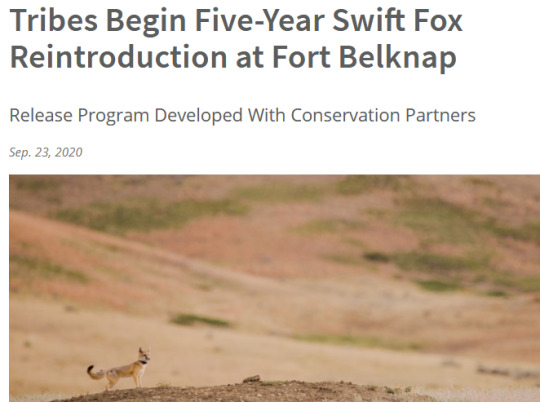

...
... right next to headlines like this ...

----
Here is a look at one of the swift foxes at the Fort Belknap reservation in 2020:

Another fox:

Some stuff.
The historical distribution range of the swift fox, to give an idea of the scale of the extinction.

Here’s an excerpt from a Smithsonian press release that describes the importance of the Fort Belknap reintroduction:
After an absence of more than 50 years, the swift fox has returned to the grasslands of the Fort Belknap Indian Reservation in Montana. From Sept. 12 to 20, the Assiniboine (Nakoda) and Gros Ventre (Aaniiih) Tribes of Fort Belknap released 27 swift foxes […], kickstarting a five-year swift fox reintroduction program. […] Swift fox numbers declined precipitously in the late 1800s, mainly due to poisoning intended for coyotes and wolves and the loss of grassland habitat. During this same time they were also eliminated from the northern portion of their range. [...] [Re]introduced populations [north of the Missouri River] have yet to reconnect with populations in the southern portion of their historic range. [...] The Fort Belknap swift fox reintroduction marks the eighth effort of its kind. Swift foxes were previously reintroduced in Saskatchewan and Alberta, Canada (1983-1997); Blackfeet Nation, Montana (1998-2002); Bad River Ranches, South Dakota (2002-2007); Badlands National Park, South Dakota (2003-2005); Fort Peck Reservation, Montana (2006-2010); and Pine Ridge Reservation, South Dakota (2009-2010).
Source: Smithsonian National Zoo Newsroom press release. “Tribes Begin Five-Year Swift Fox Reintroduction Program.” 23 September 2020.
-------
So, here’s a look at previous reintroduction sites:
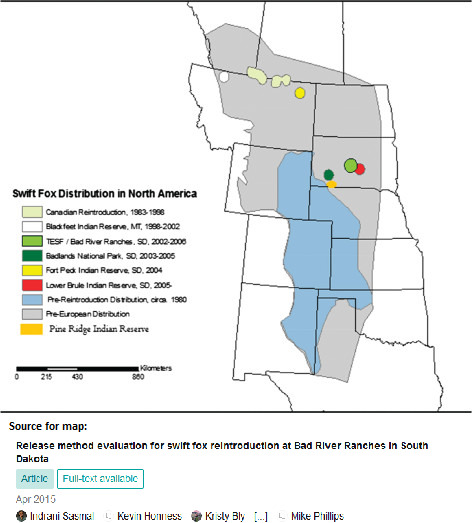
And here’s a zoomed-in look with annoying additions from me:

I’d note that all of the swift fox reintroduction sites within US borders are on are right next to Native reservations (Pine Ridge, Lower Brule, Fort Peck, and Fort Belknap).
As noted by the Smithsonian press release, and also by the reintroduction program’s leading non-Native coordinator in other published work from 2020, the swift foxes north of the Missouri River are not able to connect with the species’ healthier/stronger populations and main distribution range farther south in the Great Plains.
Here’s what that region looks like:
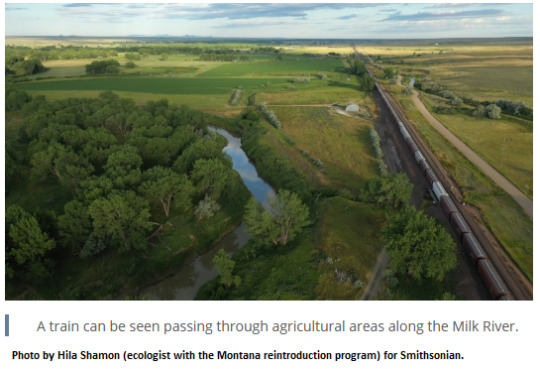
-------
The region where the state of Montana chose to expand the trapping of swift foxes is known as “Region 6″ -- near the Milk River in the “Hi-Line” region, where Fort Belknap and Fort Peck reservations are located.

While it might’ve been easier for the state of Montana to justify an expansion of swift fox trapping in the southeastern corner of the state (where the swift fox populations at least have direct connectivity with \the larger, wider, and healthier fox populations farther south in the Great Plains), the state chose to expand trapping in the northern reintroduced population area.
Why is the decision to expand trapping north of the Missouri River, specifically, absurd?
Tried to describe it here:
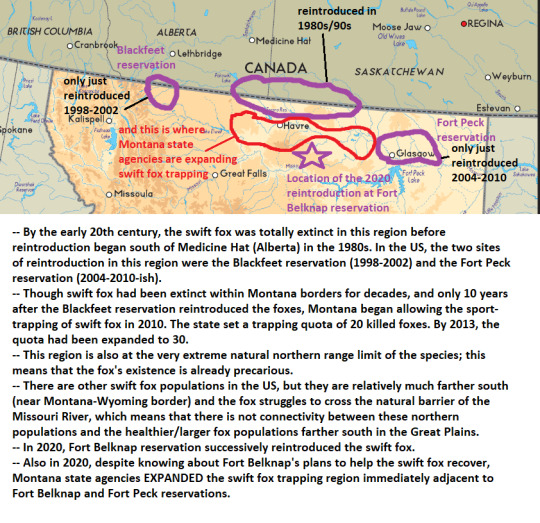
So the the swift fox was extinct in the majority of its distribution range, and was still completely absent from the vast area between Nebraska’s Sand Hills and Alberta, as recently as about the year 2000. And in this region, within the US, the fox now exists, really, only near a few isolated reservations. Should the state of Montana really be letting any sport-hunting occur? Especially right next to a Native community actively trying to help the swift fox re-establish itself?
Upsetting.
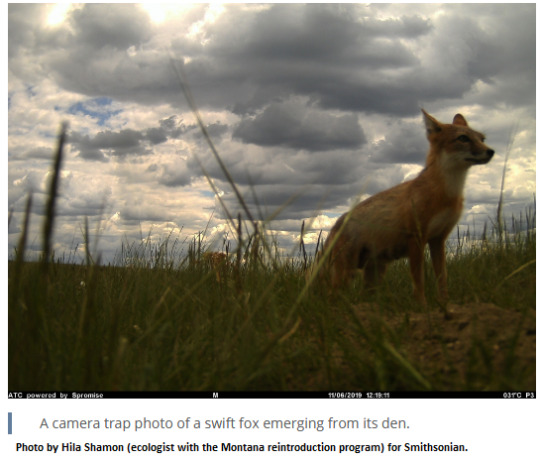
4K notes
·
View notes
Text
BLUE XMAS for Native Americans

"Children at Dinner Table, Christmas," Pine Ridge Reservation SD, 1935, NARA ID 12464694.
Mandatory Xmas Cheer: Toxic Positivity circa 1933
By Miriam Kleiman, Public Affairs

Office of Indian Affairs "The Mission Indian," newsletter, 12/1933, NARA ID 176414689.
The government's efforts to forcibly assimilate Native Americans included mandatory Christmas activities, as outlined by John W. Dady, Superintendent of the Mission Indian Agency. To help children achieve the "full measure of happiness and merriment" Dady advised:
MANDATORY GRATITUDE to:
"Our wonderful President who is doing his best to bring back... prosperity and good will."
"Our sympathetic, thoughtful and courageous Commissioner of Indian Affairs who is doing his part to make the Indian people happy."
And to those on the reservations for the "commendable spirit of co-operation... in our efforts to make you happy, contented and successful."
XMAS MERRIMENT ON RESERVATIONS to include:
A community Christmas tree "on every Reservation"
A "committee of women" to handle decorations and gifts
"Singing groups" to sing Christmas carols "thus expressing in song and music, our joy and happiness at the Holy and Merry festival of Christmas."

Christmas at Rosebud Reservation Indian Hospital (SD), 1945, NARA ID 41089564
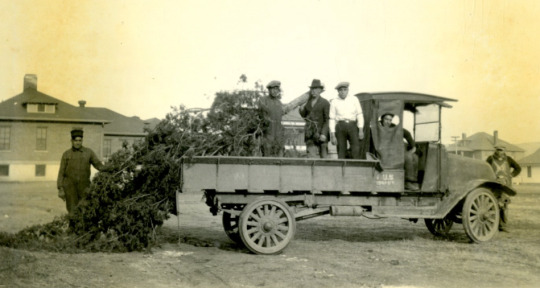
"Bringing in the Christmas Tree", NARA ID 35295411.

Mission Indian newsletter 12/1937, NARA ID 176415060.
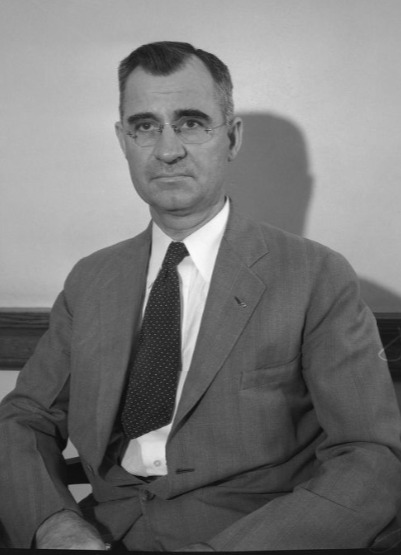
John W. Dady, "Dady has entered the California Mission Indian work with intentions to carry out the 'new deal' promised for Native Americans by John Collier." LA Times, 8/3/1933.
Such instruction was part of a "reeducation"/assimilation campaign that included the forced, systematic removal of Native children from their families starting in 1879. A 1969 Senate report underscored the results. Indian Education: A National Tragedy, a National Challenge (AKA "the Kennedy Report", Special Subcommittee on Indian Education).


The National Archives holds hundreds of thousands of records relating to Native Americans, including every treaty, records from the Bureau of Indian Affairs and Indian Census Rolls. Archivist of the United States David S. Ferriero has stressed the importance of making these records widely available in order to "raise and increase awareness of Native American history." See his ongoing blog series that "acknowledges the ancestral lands on which the National Archives’ buildings are situated across the country." The Archivist explained why this is a priority:
I grew up in Massachusetts, a state with lots of Native American heritage, and used to walk the edge of a local lake collecting arrowheads. So it was from childhood on that I had an interest in those that were here first. Of all the things we have custody of and are responsible for—even the Charters of Freedom—I believe the treaties with the Indian nations are the most valuable documents in terms of reading the original language and the government promises, and realizing what was never delivered. I have had opportunities, as members of tribal elders or tribal lawyers have come to visit, to join them in the vault as they experience the same things...
Now, many more descendants of the original peoples can examine the names and seals and read the words set down by their ancestors so long ago. But more than that, the treaties are still relevant today as tribal leaders and lawyers continue to use them to assert their rights in court, such as in cases over land and water rights. With such increased access to these records, we plan to continue and increase our educational outreach to Native American communities, and to raise and increase awareness of Native American history.
See also:
Native American Treaties Now Online for the First Time
Online: Photos from the Bureau of Indian Affairs
Administrative Records Related to American Indian Schools
Student Case Files from Non-Reservation Boarding Schools
Navigating Record Group 75: BIA Schools
The Power of American Indian Boarding School Records, Pieces of History
Mellon Foundation and National Archives to Support Expansion of Cultural Diversity in American History
#native americans#indian history#mellon foundation#archivist#ferriero#aotus#native american#indigenous#epic fail#american history#blue christmas#native american history#treaties#pine ridge#nativeamericanrights#nativeamericanlivesmatter#bipoc#its not christmas
296 notes
·
View notes
Photo




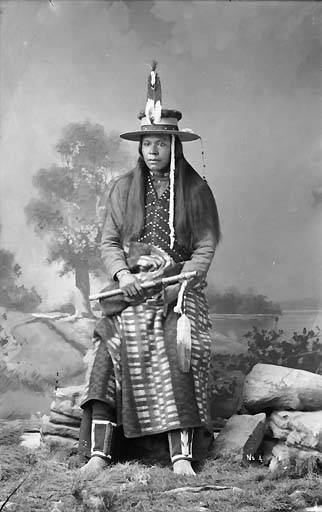
Portrait of She Came Spotted (seated) an unidentified Native American Sioux woman, posed outside on a fur skin rug in front of a painted backdrop of a Lakota style Indian war record, Pine Ridge Agency, South Dakota.
Chief Danforth near Ohsweken, Ontario - Iroquois (Oneida) - no date and Crow Blanket - Nez Perce - 1913
early Benedicte Wrensted photograph of an Indian cowboy possibly of the Shoshone-Bannock Tribe and Plateau man with a decorated hat, ca. 1900
#mdpcostume#photography#native american#tribal#the Americas#costume#Sioux#iroquois#Lakota#crow#north america
558 notes
·
View notes
Photo
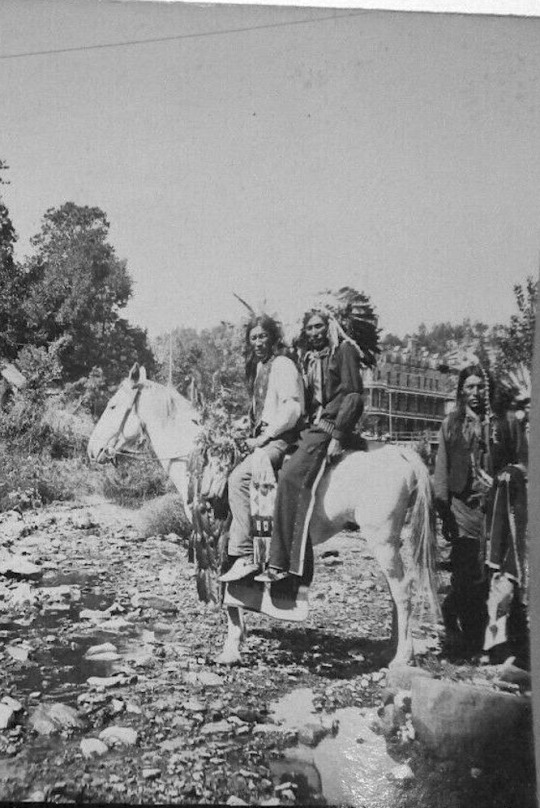
Pine Ridge Agency, Oglalas - Cross 1880s
42 notes
·
View notes